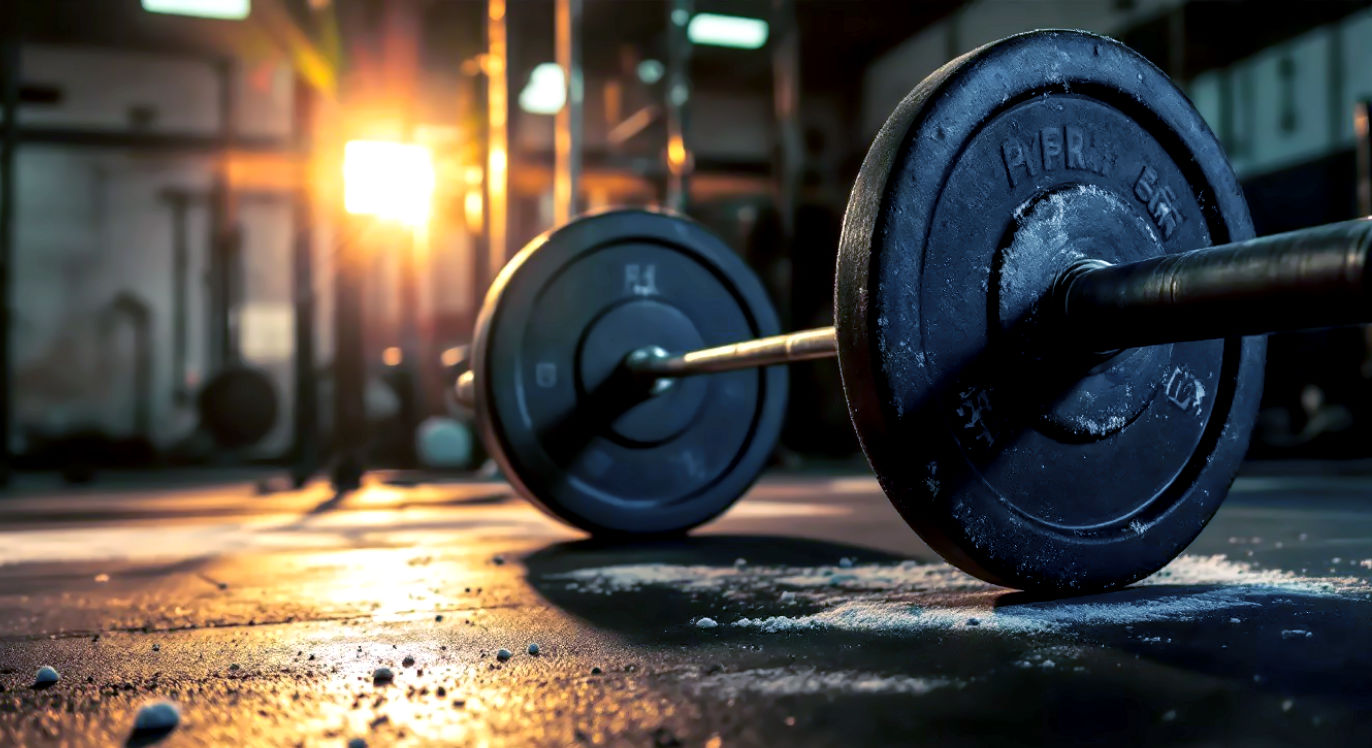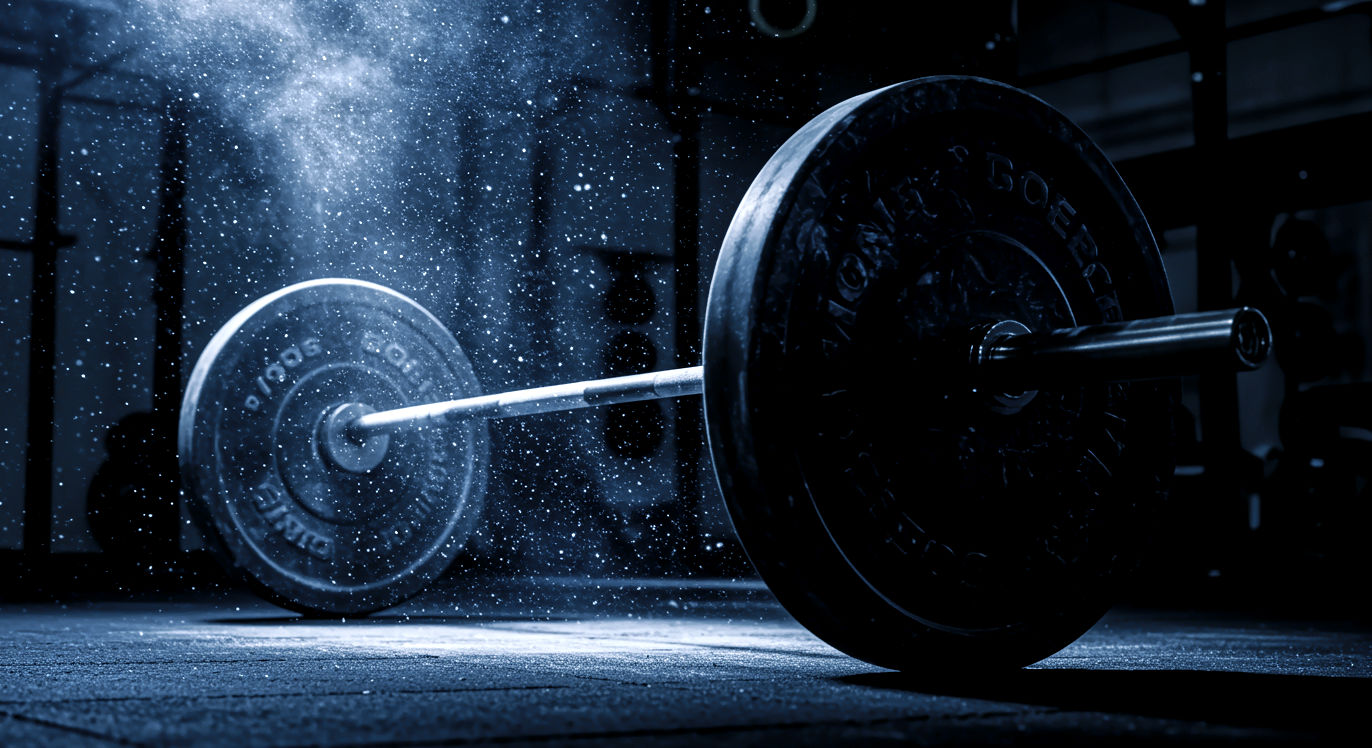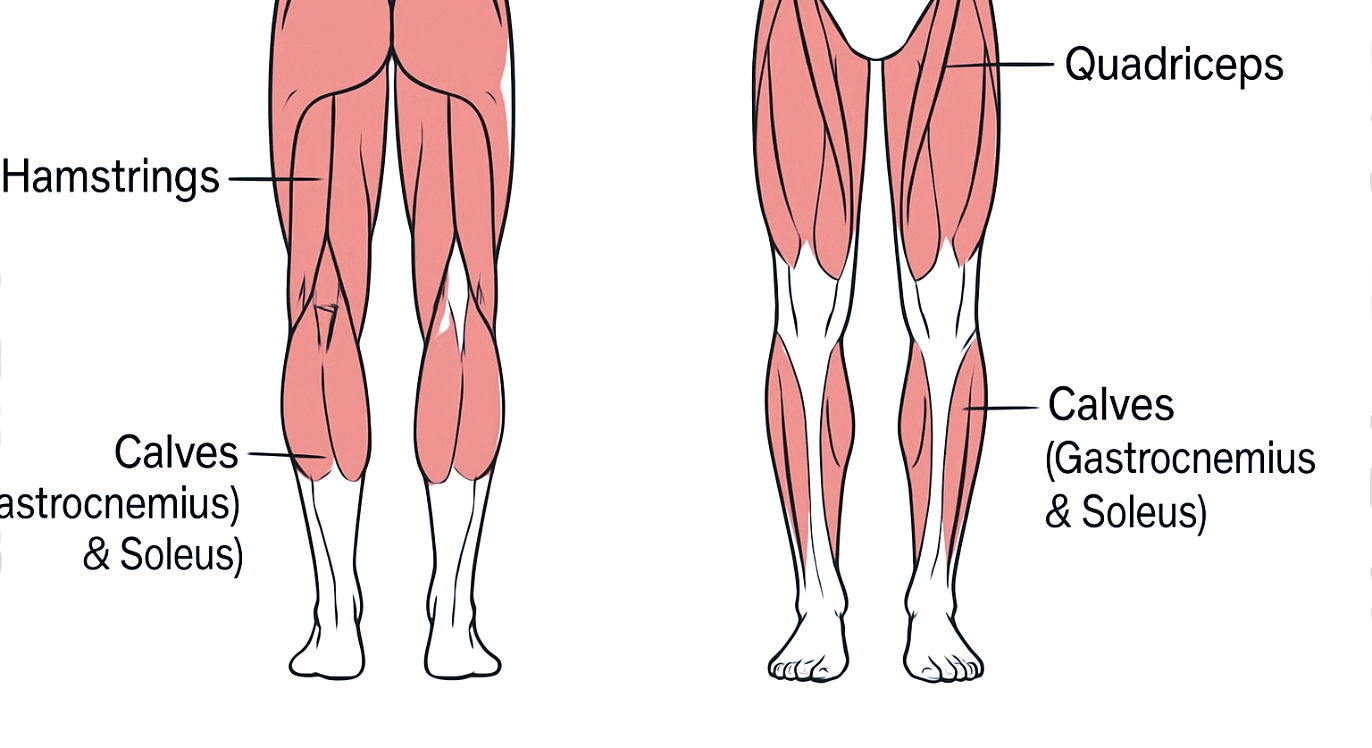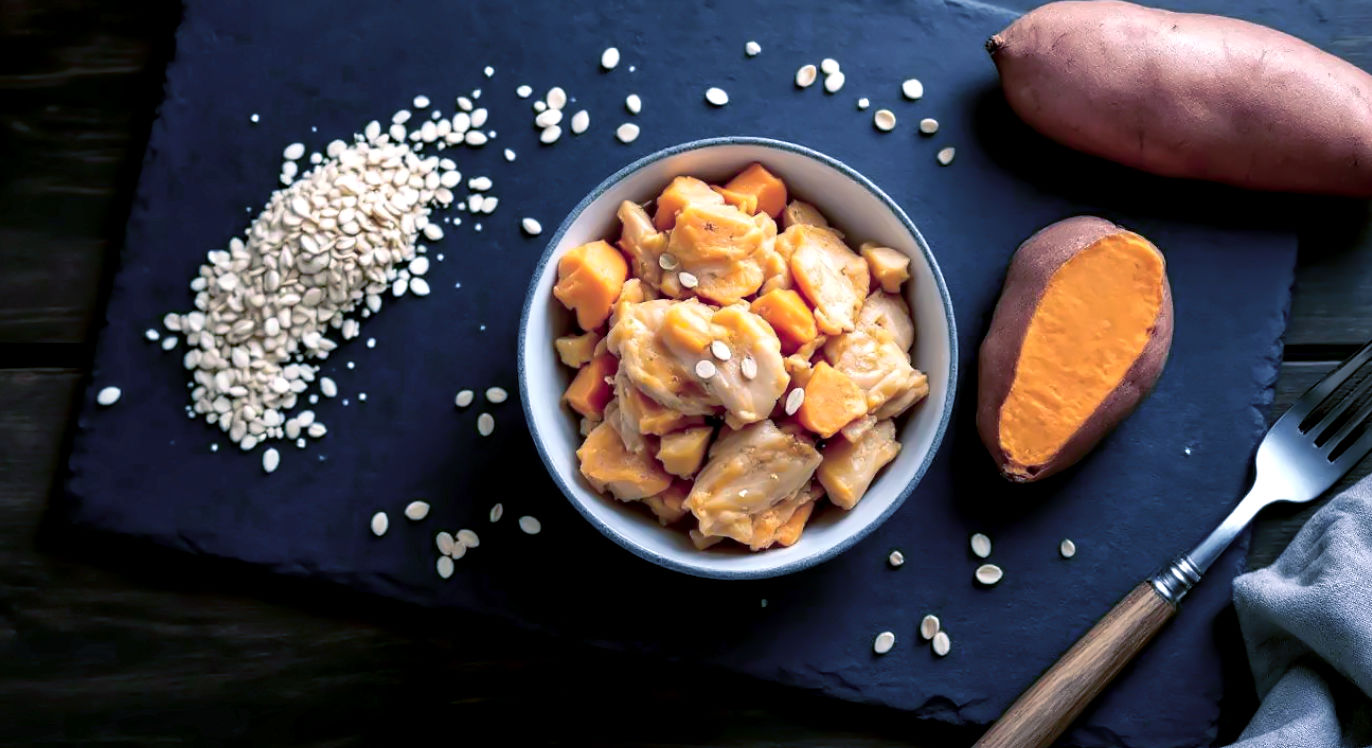The Best Workout for Legs: 5 Compound Moves for Maximum Growth
Stop wasting time on leg day. This definitive guide breaks down the 5 compound exercises that actually build mass, from squats to deadlifts.

This post may contain affiliate links. If you make a purchase through these links, we may earn a commission at no additional cost to you.
Let’s be honest: there’s a reason “skip leg day” is a global meme. Training legs is hard. It’s brutal. It challenges you in a way no bicep curl ever will. But that’s exactly why it’s the most important and rewarding workout you can do.
Your legs are, quite literally, the foundation of your body. They are home to your largest muscles—the glutes, quads, and hamstrings. Training them isn’t just about aesthetics; it’s about building a more powerful, athletic, and metabolically active machine. A strong lower body is the engine for nearly every athletic movement: running, jumping, changing direction, and lifting heavy objects.
The problem? Most people waste their time. They wander from the leg extension machine to the adductor machine, doing endless “fluff” movements for minimal results.
This guide will fix that. We’re not just giving you a list of exercises; we’re giving you a complete system based on one non-negotiable principle: to build maximum muscle, you must prioritize big, heavy, compound exercises. Forget the 15-move “finisher” workouts. You need to get brutally strong on these five key movements.
Key Takeaways
- Focus on the “Big 5”: Your entire leg training should revolve around five key compound moves: The Barbell Squat, the Deadlift, the Lunge, the Leg Press, and the Calf Raise.
- Compound Lifts are King: Compound exercises (moves that use multiple joints and muscle groups at once) are the 80/20 of leg growth. They’re more efficient, build more functional strength, and provide a greater hormonal response than isolation moves.
- The Real Secret: The “best workout” isn’t a magic set-and-rep scheme. The secret is Progressive Overload (the principle of gradually increasing the stress on your muscles over time). You must get stronger to get bigger.
- Form Over Everything: You cannot build muscle with an injury. Master the form of each lift before you start chasing heavy weights.
- The Growth Trinity: This workout is only the stimulus. Actual growth happens when you provide two other things: proper fuel (nutrition, especially protein) and recovery (sleep).
Why “Leg Day” Is the Most Important Workout of Your Week
Think of your body as a house. Your arms, shoulders, and chest are the upper floors and furniture. But your legs? They’re the concrete foundation. You can’t build an impressive, strong structure on a weak foundation. It’s functionally impossible.

When you train your legs with heavy, compound movements, you’re doing more than just building leg muscle.
- Systemic Anabolic Response: Because these exercises recruit so much muscle mass, they trigger a massive hormonal response. Your body releases more growth hormone and testosterone than it would during, say, an arm workout. This creates a systemic anabolic (muscle-building) environment that benefits your entire body.
- Metabolic Furnace: Muscle is metabolically active tissue. The more you have, the more calories you burn at rest. Building a powerful set of glutes and quads (your body’s largest muscles) is the single most effective way to permanently raise your resting metabolism.
- Real-World Strength: You squat to sit in a chair. You deadlift (or “hip hinge”) to pick up a suitcase. You lunge to tie your shoe. These movements are the foundation of human function. Training them makes you better at life.
The “Secret” to Growth: Compound Lifts vs. Isolation
Walk into any gym, and you’ll see the leg section split in two. You’ll see people in the squat rack, and you’ll see people on the leg extension, leg curl, and adductor machines. Both are training legs, but only one group is training for maximum growth.
- Compound Exercise: A move that uses multiple joints and muscle groups simultaneously. A squat is a perfect example: it involves your hip, knee, and ankle joints, and it hammers your quads, glutes, hamstrings, and core all at once.
- Isolation Exercise: A move that targets a single joint and muscle group. A leg extension is the classic example: it only involves the knee joint and only trains the quadriceps.
Here’s the 80/20 rule for legs: compound moves will deliver 80% of your results.
Why? It’s simple efficiency and overload. With a single squat, you’re hitting almost every muscle in your lower body. To get the same stimulus from isolation machines, you’d need to do leg extensions (quads), leg curls (hamstrings), and a glute kickback machine (glutes). You’d be spending three times as long for a less functional, less anabolic result.
Isolation moves have their place—they’re great for “finishers” or bringing up a lagging part. But they should be the dessert, not the main course. Your workout must be built on the big, heavy compound lifts.
A Quick Tour of Your Legs: Anatomy 101
To train a muscle, you need to know where it is and what it does. Here’s a quick, simple breakdown.
- The Engines: Your Quadriceps (Quads): This is the big group of four muscles on the front of your thigh. Their main job is knee extension (straightening your leg). This is the primary muscle you feel working in a squat or leg press.
- The Brakes: Your Hamstrings: This is the group of three muscles on the back of your thigh. They have two jobs: knee flexion (curling your heel to your butt) and hip extension (driving your hips forward, like in a deadlift).
- The Powerhouse: Your Glutes: This is your butt. The Gluteus Maximus is the largest muscle in your entire body. Its main job is powerful hip extension. A strong squat and deadlift are, fundamentally, driven by powerful glutes.
- The “Forgotten”: Your Calves: Down on your lower leg, you have two key muscles: the Gastrocnemius (the visible, diamond-shaped muscle) and the Soleus (a deeper muscle). They work together for plantar flexion (pointing your toes, or standing on your tiptoes).
Now, let’s look at the five moves that train all of these parts in the most effective way possible.

The 5 Compound Moves for Maximum Leg Growth
This is the core of your workout. Your goal is to master these movements and get progressively stronger at them over time. We will break down each one using our simple structure: a simple explanation, a detailed “how-to,” and the most common mistakes to avoid.
1. The Barbell Back Squat: The Undisputed King
Lead: If you could only do one exercise for the rest of your life to build powerful, muscular legs, this would be it. The squat is the foundational movement for lower-body strength.
Simplified Explanation: At its core, a squat is just the movement of sitting down in a chair and standing back up—only with a heavy barbell on your back that’s trying to crush you. It trains your quads, glutes, and core under heavy load.
Detailed Breakdown: How to Perform It Perfectly
- The Setup: Set the barbell in a power rack just below shoulder height. Duck under the bar and place it in one of two positions:
- High-Bar: Resting directly on your traps (the “shelf” of muscle on your upper back). This is more common and keeps your torso upright, which targets the quads more.
- Low-Bar: Resting lower down, across your rear deltoids. This forces you to lean forward more and involves more hips/glutes.
- Our advice? Start with high-bar. It’s more intuitive.
- The Grip & Walkout: Grab the bar firmly, slightly wider than your shoulders. Pull your elbows down and back to create a tight, stable shelf. Take a deep breath, and lift the bar off the rack. Take 2-3 confident steps back.
- The Stance: Place your feet just outside shoulder-width. Point your toes slightly outward (about 15-30 degrees).
- The Brace: This is the most critical safety step. Take a huge breath into your stomach, not your chest. Now, brace your abs as if you’re about to be punched. This is a core brace (it creates 360-degree pressure, called intra-abdominal pressure, to protect your spine). Hold this brace for the entire rep.
- The Descent: Initiate the movement by “breaking” at your hips and knees at the same time. Think “sit back and down” between your heels. Keep your chest up and your gaze neutral (look at a spot on the floor 6 feet in front of you).
- The Depth: Your goal is to squat until your hip crease is at or just below your knee. This is “parallel” depth. It ensures full muscle activation.
- The Ascent: Drive up out of the bottom, thinking about “pushing the floor away.” Keep your chest leading up and don’t let your hips shoot up faster than your shoulders. Squeeze your glutes at the top. Exhale, re-brace, and go again.
Common Myth Debunked: “Squats are bad for your knees.” This is 100% false. Bad squatting is bad for your knees. Performing squats with correct form and full range of motion actually strengthens the ligaments and muscles around the knee, making them more stable and resilient.
2. The Deadlift: Building a Powerful Posterior Chain
Lead: This isn’t just a “back exercise.” It’s a total-body movement that is arguably the best builder for your entire posterior chain—your hamstrings, glutes, and all the muscles that run up your back.
Simplified Explanation: It’s the simple, functional-for-life movement of picking a heavy object up off the floor. But doing it safely requires perfect technique, turning it into a leg-building powerhouse.
Detailed Breakdown: How to Perform It Perfectly
We’ll focus on the Conventional Deadlift.
- The Stance: Walk up to the bar so it’s directly over the middle of your foot (your shoelaces). Your feet should be about hip-width apart, toes pointing mostly forward.
- The Grip: Hinge at your hips (push your butt back, keep your back flat) and grab the bar just outside your shins. A double-overhand grip is fine to start. As weight gets heavy, you’ll use a mixed grip (one hand over, one hand under).
- The “Wedge”: This is the key. Before you lift, pull the slack out of the bar. You’ll hear a “click.” Now, pull your chest up and pull your lats back and down (think: “tuck your shoulder blades into your back pockets”). Your back should now be perfectly flat and tight as a drum. This is the hip hinge (a bend at the hips, not the spine), the most important movement pattern to learn.
- The Lift: Take a deep breath and brace your core (just like the squat). To initiate the lift, don’t pull with your back. Instead, think: “push the floor away” with your legs. As the bar passes your knees, drive your hips forward aggressively.
- The Lockout: Squeeze your glutes hard at the top to stand up straight. Do not lean back.
- The Descent: Reverse the motion. Push your hips back first. Keep the bar close to your body. Once it passes your knees, you can bend your knees to set it down.
Real-World Example: This is the exact movement you should use to pick up a 50-pound bag of dog food, a heavy suitcase, or your toddler. Mastering the hip hinge protects your lower back for life. If your back is rounding, the weight is too heavy. Drop the ego.
3. The Lunge (and its Variations): The Unilateral Powerhouse
Lead: Squats and deadlifts are great, but because you use both legs at once, your stronger leg can often compensate for your weaker one. Lunges expose and fix these imbalances.
Simplified Explanation: It’s a deep, exaggerated step that forces one leg at a time to handle your entire bodyweight (plus any weight you’re holding). It’s a massive builder for glutes and quads and a phenomenal stability challenge.
Detailed Breakdown: How to Perform It Perfectly
We’ll focus on the Dumbbell Walking Lunge.
- The Setup: Grab two dumbbells. Stand tall with your feet together, core braced.
- The Step: Take a large, controlled step forward with your right leg.
- The Descent: Lower your body straight down until your right thigh is parallel to the floor and your left (back) knee gently taps, or almost taps, the ground.
- The Focus: This is key. Your torso angle determines the muscle bias.
- Upright Torso: Keeps more stress on the front leg’s quad.
- Slight Forward Lean: Stretches the glute and hamstring of the front leg, making them work harder. We recommend this for max growth.
- The Ascent: Drive up and forward through your front foot. Bring your back (left) leg forward to meet your right.
- The Rep: Now, immediately step forward with your left leg. That’s one rep (per side).
Variation for Max Growth: The Bulgarian Split Squat. This is a static (non-walking) lunge where your back foot is elevated on a bench. It’s brutally effective because it increases the range of motion and the stability demand. From a practical standpoint, it’s one of the single best glute and quad builders, period.
4. The 45-Degree Leg Press: The “Brute Force” Mass Builder
Lead: Let’s be real: sometimes your lower back is tired, or your core stability is the weak link in your squat. The leg press allows you to bypass those weak links and focus purely on pushing massive amounts of weight with your legs.
Simplified Explanation: It’s like a squat flipped on its back. You’re in a fixed, supported seat, allowing you to load up your quads and glutes with brute force.
Detailed Breakdown: How to Perform It Perfectly
- The Setup: Sit in the machine and place your feet on the platform.
- Foot Placement is Everything:
- Low & Narrow: Puts more emphasis on the quads.
- High & Wide: Puts more emphasis on the glutes and hamstrings.
- Our advice? Start with a neutral, shoulder-width stance in the middle of the platform.
- The Brace: Grab the handles at your side and pull yourself down into the seat. This helps keep your glutes and lower back glued to the pad.
- The Descent: Un-rack the weight. Take a deep breath and lower the platform slowly.
- The “Danger Zone”: This is the single most common mistake. People go too deep, and their lower back rounds and lifts off the pad. This is called “butt wink,” and it puts massive, dangerous shear-force on your lumbar spine. Only go as deep as you can while keeping your entire back and glutes flat on the pad. For most, this is about 90 degrees at the knee.
- The Ascent: Drive the weight back up through your mid-foot and heel (don’t push with your toes). Do not lock your knees out at the top. Keep a “soft” bend in them to maintain tension on the quads.
5. The Standing Calf Raise: Don’t Forget the Calves
Lead: Calves are the most stubborn muscle group for most people. The reason? They’re used to insane volume (you walk on them all day), and most people train them with lazy, bouncy half-reps.
Simplified Explanation: It’s the simple motion of standing up on your tiptoes, but to make it build muscle, you need to do it with heavy weight, a full range of motion, and zero bouncing.
Detailed Breakdown: How to Perform It Perfectly
- The Muscle (Anatomy 2.0): Your calf has two main parts. The Gastrocnemius (the diamond muscle) is trained when your leg is straight. The Soleus (the deeper muscle) is trained when your knee is bent. Therefore, you need both straight-leg (Standing) and bent-knee (Seated) calf raises for full development.
- The Setup (Standing Raise): Get in a standing calf raise machine. Place the balls of your feet on the platform, letting your heels hang off.
- The Stretch: Slowly lower your heels as far as they can possibly go. Feel that deep stretch. This is the most important part for growth. Pause here for 2 seconds.
- The Contraction: Explode up, driving as high onto your big toe as possible. Squeeze your calves as hard as you can. Think of it as a violent, cramping contraction. Hold this “peak” for 2 seconds.
- The Rep: Slowly lower back into the deep stretch. No bouncing, ever. Each rep should be a deliberate stretch-pause-squeeze-pause. This will burn, and that’s the point.
Building Your Workout: The “How-To” for Real Growth
Having the 5 best exercises is great. But how do you put them together? You need a plan.
The Single Most Important Principle: Progressive Overload
If you remember one thing from this entire article, make it this. Your muscles do not grow because you confuse them or “shock” them. They grow because you give them a reason to.
Progressive Overload is the principle of gradually increasing the stress (or “demand”) on your muscles over time, which forces them to adapt by getting bigger and stronger.
Think of it like getting a callus. You rub your hand a little, it gets red. You do it a lot, your body adapts by building a tough callus. Your muscles work the same way. A workout is a stressor. Your body adapts by rebuilding the muscle fibers slightly thicker and stronger.
To keep growing, you must keep increasing the stress. You can do this by:
- Increasing Weight: The most obvious. If you squat 100kg for 8 reps, next week you try for 102.5kg for 8 reps.
- Increasing Reps: If you squat 100kg for 8 reps, next week you try for 9 reps.
- Increasing Sets: If you do 3 sets, you do 4 sets.
- Decreasing Rest: (This is more for conditioning, but it is a form of overload).
Your #1 goal is to write down your workouts and beat your numbers over time. That is the true secret to growth.
The “Hypertrophy Zone”: How Many Sets and Reps?
Hypertrophy is the scientific term for muscle growth. Decades of research have shown that the “sweet spot” for hypertrophy is in the 6-12 rep range.
- Fewer than 6 reps (e.g., 1-5) tends to build pure strength (neurological adaptation).
- More than 12 reps (e.g., 15-25) tends to build pure endurance.
- The 6-12 rep range is the sweet spot that provides the best blend of mechanical tension and metabolic stress—the two main drivers of growth.
Your Plan: For your main compound lifts (Squat, Deadlift, Leg Press), aim for 3 to 4 “working sets” in the 6-12 rep range. A “working set” is a set that is challenging, taken close to failure.
How Often Should You Train Legs? The Frequency Debate
For decades, bodybuilders trained legs once per week with a “brutal” high-volume session. The modern, evidence-based approach shows that training a muscle group twice per week is often superior for growth.
Why? It allows you to stimulate the muscle, let it recover, and then stimulate it again all in the same week. This gives you two opportunities for growth instead of one.
Our sample plan will be based on a 2x-per-week leg day.
Sample Leg Workouts for Max Growth
Here is a sample 2-day-a-week leg plan. You’d typically split these up (e.g., Monday and Thursday) to allow for 2-3 full days of recovery in between.
Workout A: The Foundation (Quad & Squat Focus)
- Barbell Back Squat: 3 sets of 6-8 reps
- 45-Degree Leg Press: 3 sets of 10-12 reps
- Walking Lunge (Dumbbell): 3 sets of 10-12 reps (per leg)
- Standing Calf Raise: 4 sets of 10-15 reps (with 2-sec stretch & pause)
Workout B: The Posterior Chain (Hinge & Hamstring Focus)
- Deadlift: 3 sets of 5-8 reps (Note: Deadlifts are very taxing; keep reps slightly lower)
- Bulgarian Split Squat: 3 sets of 8-10 reps (per leg)
- Lying Leg Curl (Isolation): 3 sets of 12-15 reps (Our one isolation move to fully hit hamstrings)
- Seated Calf Raise: 4 sets of 15-20 reps (To hit the Soleus)

Fueling the Fire: The Overlooked Half of Leg Growth
You can do these workouts perfectly, but if you don’t eat for growth, you won’t grow. It’s that simple. You can’t build a house without bricks.
- You Can’t Build a House Without Bricks (Protein): Protein is the raw building block of muscle tissue. You must consume enough protein to repair the damage you cause in the gym. Aim for at least 0.8-1 gram of protein per pound of bodyweight (e.g., a 180lb person should aim for 144-180g of protein).
- Carbs Are Not the Enemy (Energy): Carbohydrates are your body’s primary fuel source. They are stored in your muscles as glycogen. A heavy, high-rep leg workout is fueled by glycogen. If you’re on a low-carb diet, you will feel weak, your performance will suffer, and your growth will stall. Eat quality carbs like rice, potatoes, and oats, especially around your workout window.
“What’s Next?” and Common Pitfalls
Myth Debunked: “I’m a woman, and I don’t want my legs to get ‘too bulky’.”
From a practical and scientific standpoint, this is one of the biggest myths in fitness. Women produce a fraction of the testosterone that men do. It is physiologically and incredibly difficult for women to build large, “bulky” muscles. It requires years of dedicated, heavy lifting and a very high-calorie, high-protein diet.
What will happen from this workout? You will build strong, dense, “toned” (a term that just means “visible muscle”) legs. You will build powerful glutes. You will raise your metabolism and get leaner. You will not accidentally look like a pro bodybuilder.
Your Action Plan: Stop Reading, Start Lifting
You now have more than just a workout. You have a complete blueprint for building the strongest, most muscular legs you’ve ever had. You understand the why (compounds, anatomy), the what (the 5 moves), and the how (progressive overload, nutrition).
Here’s your 5-step action plan.
- Pick Your Plan: Choose one of the sample workouts.
- Go to the Gym: Schedule your two leg days for this week.
- Get a Notebook: Go to the gym, warm up properly, and write down every single exercise, weight, set, and rep.
- Execute with Perfect Form: Focus 100% on the mind-muscle connection and the form cues in this guide.
- Beat Your Book: The next time you do that workout, your only goal is to look at your notebook and beat one number. Add 2.5kg. Add one more rep.
Do that, eat your protein, and get your sleep. Repeat for six months. You won’t just have stronger legs; you’ll have built a new foundation.
Further Reading:
- Peer-reviewed studies on hypertrophy from the Journal of Strength and Conditioning Research.
- Guides on exercise biomechanics from the National Strength and Conditioning Association (NSCA).
- Seminal papers on muscle adaptation and hypertrophy by Dr. Brad Schoenfeld.
- Textbooks on exercise physiology, such as McArdle, Katch, & Katch’s ‘Exercise Physiology’.
- Official safety guidelines for resistance training from the American College of Sports Medicine (ACSM).
